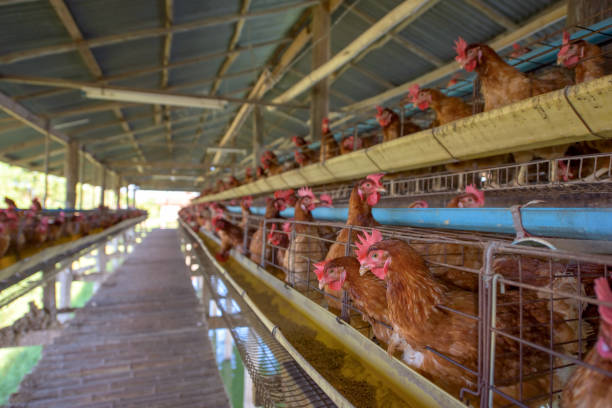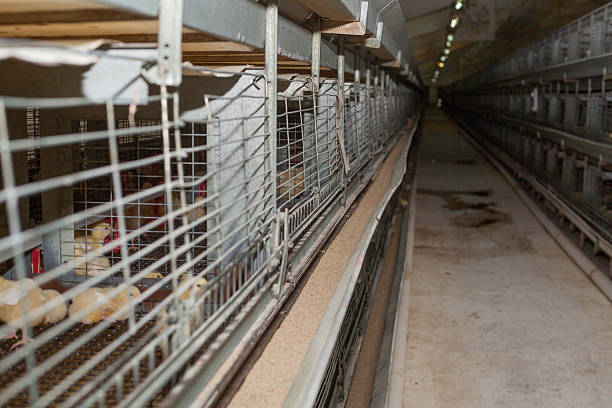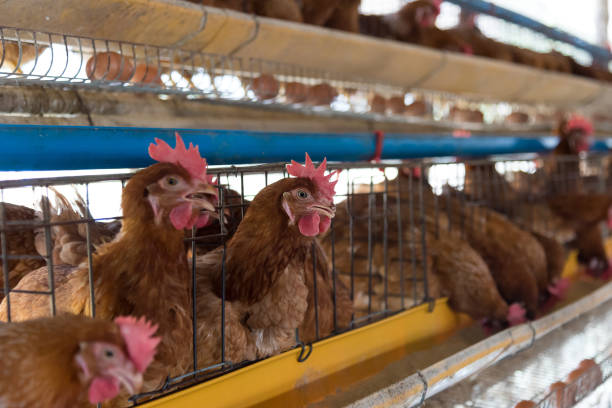High-capacity automatic feeding and egg collection system for 20000 layers
**High-Capacity Automatic Feeding and Egg Collection System for 20,000 Layers**
Managing a poultry farm with 20,000 laying hens can be a demanding operation, especially when it comes to feeding and egg collection. Efficient systems are crucial for maintaining high levels of productivity, animal welfare, and operational sustainability. This is where a high-capacity automatic feeding and egg collection system comes into play, revolutionizing the way large-scale layer farms operate. Whether you are building a new farm or upgrading an existing one, investing in automation is one of the smartest decisions you can make.
Designed with cutting-edge technology and backed by years of poultry equipment manufacturing experience, these automated systems not only reduce labor costs but also ensure consistent feeding and collection, leading to healthier hens, higher egg yields, and lower mortality rates. Let’s delve deeper into how these systems work, why they’re essential for large-scale farms, and how to choose the best one for your 20,000-layer operation.
### What Exactly Is a High-Capacity Automatic Feeding and Egg Collection System?
At its core, an automatic feeding and egg collection system is designed to streamline two of the most labor-intensive tasks on a layer farm—feeding and collecting eggs. Rather than relying on manual labor which can lead to inconsistency, health risks, and inefficiencies, these systems automate the process using conveyors, control panels, sensors, and other mechanical components.
In a large farm with 20,000 layers, manually feeding and collecting every day isn’t just impractical—it’s inefficient and prone to errors. An automatic system ensures that every hen receives the right amount of feed at the right time, and eggs are gently collected as soon as they’re laid to prevent breakage, soiling, and loss.
### Key Components and How They Work Together
A high-capacity system for 20,000 layers is typically composed of several core components that work in harmony to ensure smooth, consistent operation:
1. **Automatic Feeding Line**
This system usually includes a silo, a central distribution unit, and feeding conveyors that deliver feed to all feeding points throughout the poultry house. Spiral or chain feeding systems are commonly used. The feed is automatically weighed and distributed according to a set schedule, ensuring precise and even feeding for all layers.
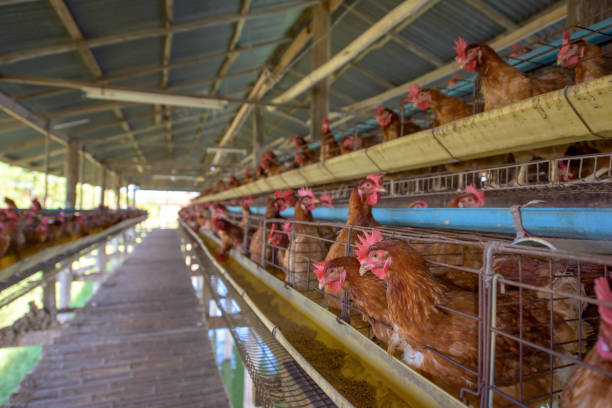
2. **Egg Collection Conveyors (Egg Belt System)**
Eggs are laid onto sloped wire floors or individual nests and then gently roll onto plastic or rubber egg belts. These belts transport the eggs to a central collection point or packing station. Egg belts are designed to reduce breakage and keep eggs clean by minimizing contact with manure.
3. **Central Control System**
Most modern systems are equipped with a PLC (Programmable Logic Controller) panel that allows farmers to schedule feeding and egg collection times, monitor system performance, and receive alerts in case of malfunctions or downtime.
4. **Manure Removal System**
Although not directly related to feeding or egg collection, a properly integrated manure removal system ensures a cleaner, healthier environment for the birds. This contributes to better egg quality and reduces the risk of disease outbreaks.
5. **Supporting Equipment**
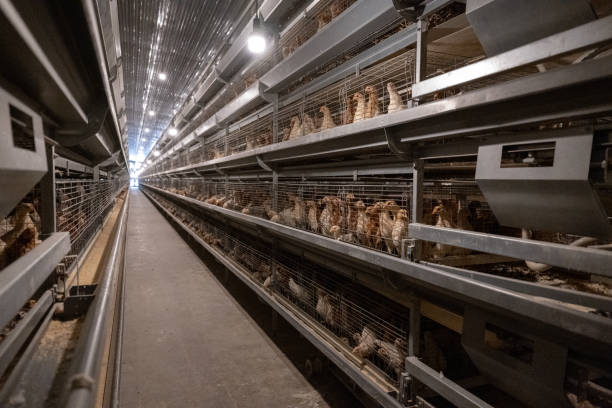
This includes feed augers, drive units, belt cleaners, emergency stops, and safety sensors that detect jams or mechanical faults and stop the system immediately to prevent damage or downtime.
All of these components must be carefully chosen, sized, and installed to handle the demands of 20,000 layers. The key is to achieve maximum efficiency without overbuilding or under-investing in the infrastructure.
### Benefits of Going Fully Automatic for 20,000 Layers
Why should you invest in an automatic feeding and egg collection system for 20,000 hens? Here are some of the top benefits that make this upgrade not just a luxury, but a necessity:
**1. Labor Savings**
Manual feeding and egg collection can require multiple workers per house. With automation, one or two workers can manage multiple houses simultaneously, significantly reducing payroll costs and the risk of human error.
**2. Increased Egg Quality and Collection Rate**
When eggs are collected quickly and transported gently, you’ll see fewer broken eggs, less dirty eggs, and higher overall collection rates. Timely collection also reduces pecking behavior and reduces the risk of eggs being left on the belts for too long.
**3. Improved Feed Efficiency**
An automated feeding system allows for precise control over feed quantity and timing, minimizing waste and overfeeding. It also ensures all birds receive their required nutrition, promoting health and consistent egg production.
**4. Better Biosecurity and Hygiene**
Automatic systems reduce the physical interaction between farm workers and hens, lowering the risk of disease transmission. Plus, integrated manure systems keep the house cleaner, making it easier to maintain high hygienic standards.
**5. Scalability and Future Compatibility**
Whether you’re starting a 20,000-layer farm or planning for expansion, automatic systems can easily scale up or be adapted for future increases in flock size. They’re also easier to monitor and upgrade as new technologies emerge.
**6. Data Monitoring and Alerts**
Modern control panels often come with remote monitoring options via smartphone or computer, allowing farm managers to keep track of operations even when they’re not on-site. Some systems can also send alerts if there’s a malfunction, enabling faster troubleshooting and minimizing downtime.
### Customization for 20,000 Layers
Each poultry operation is unique, and a one-size-fits-all solution doesn’t always work—especially when dealing with large numbers like 20,000 layers. Customizing your feeding and collection systems for your specific setup, house design, and management style is crucial.
For example, farms with multiple stories may require different conveyor layouts compared to single-story houses. Similarly, different feeding methods—such as chain feeding (used more in larger barns) versus spiral feeding lines (ideal for medium-sized houses)—may be recommended based on available space and stocking density.
When designing for 20,000 birds, it’s also important to factor in:
– **Space per bird and density planning**
– **Total number of aviaries or tier levels**
– **Distance and layout between feeding silos and the barn**
– **Integration with existing ventilation, lighting, and manure removal systems**
A competent poultry equipment supplier with experience in large-scale operations will help design a system that not only meets your current needs but leaves room for future improvements.
### Choosing the Right Supplier: What to Look For
Selecting the right supplier for your feeding and egg collection system is half the battle. Not all systems are built the same. Here’s what to look for when choosing a supplier for your 20,000-layer farm:
**1. Experience and Track Record**
Look for a supplier with a proven history of designing and delivering systems for large-scale farms. Ask for references or case studies from other customers who’ve run operations of similar or larger sizes.
**2. Technical Support and After-sales Service**
The system should be easy to operate but still might require troubleshooting every now and then. Make sure the supplier offers on-site installation guidance, training, and 24/7 technical support.
**3. Custom Engineering Capability**
Every barn layout is different. If the supplier can offer custom engineering tailored to your specific building, that’s a major plus. Avoid generic “standard” setups that might not fit well.
**4. Parts and Maintenance Availability**
It’s not enough to just install a system—you also need to maintain it. Check whether spare parts are readily available, and if the supplier has regional distributors or service centers.
**5. Energy Efficiency and Operational Cost**
While performance and reliability are most important, energy consumption also matters. Efficient motors and well-designed control systems can significantly reduce electricity use over time.
**6. Compliance with International Standards**
Ensure the system meets quality standards such as ISO certifications, CE marking, and any regional poultry equipment regulations applicable to your country.
Working with a trustworthy global exporter like ourselves, Livi Machinery, ensures that you have access to high-quality systems supported by a real understanding of the poultry industry’s evolving needs.
### Installation and Operation Tips for Maximum Performance
Once you’ve selected your system, proper installation and operation are key. Here are some expert tips to ensure everything runs smoothly from day one:
**1. Plan Your Layout Carefully**
Work with the supplier’s engineers to map out the entire layout. Make sure the paths of the feeding lines and egg belts are optimized for speed and minimal maintenance.
**2. Ensure Proper Power and Voltage Supply**
High-capacity systems often require industrial electrical support. Make sure your barn is equipped with sufficient power, proper fuses, and backups to prevent power surges.
**3. Train Your Team**
Even the best system won’t work right if the farm staff isn’t trained to use it. Spend time on operator training, maintenance routines, and troubleshooting.
**4. Regular Maintenance Schedule**
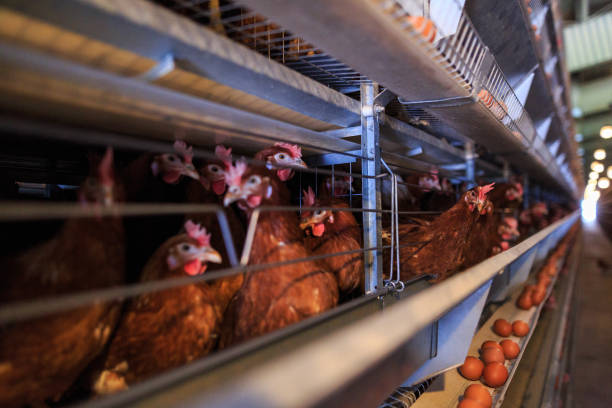
Set up a weekly and monthly maintenance checklist. Clean belts, check motor functions, and inspect for wear and tear. Preventive maintenance is far cheaper than reactive repairs.
**5. Collect Data and Make Adjustments**
Monitor how the system affects feed waste, broken eggs, and worker efficiency. Use the data to tweak timings, adjust feeding amounts, and optimize overall operations.
**6. Start Slow and Scale Up**
If you’re transitioning from manual to automatic systems, start with one barn or section. Understand how the system works and fine-tune it before scaling up to full automation.
### Future-Proofing Your Farm: Smart Integration and Innovation
As technology continues to advance, more poultry farms are integrating smart features into their automated systems. Think of it as agriculture going high-tech. Some of the next-generation features that can be added to a high-capacity system include:
– **Remote monitoring via mobile apps**
– **IoT-enabled sensors that track feed consumption, egg production, and bird behavior in real-time**
– **AI-based analytics for predicting disease risks or drops in productivity**
– **Automated sorting and grading of eggs right at the collection point**
While not all of these features are necessary for every farm, having a system that’s compatible or upgradable ensures that your farm can remain competitive and efficient even as technologies evolve.
### Final Thoughts
Whether you’re managing a commercial egg production facility or planning to build a new modern poultry farm, a high-capacity automatic feeding and egg collection system for 20,000 layers is no longer a luxury—it’s a necessity. The benefits it brings in terms of labor savings, product quality, farm hygiene, and long-term sustainability are simply too significant to ignore.
When it comes to investing in such a system, knowledge, planning, and partnering with the right supplier make all the difference. With the correct equipment and support, you can future-proof your farm, boost your margins, and deliver higher quality eggs to the market consistently.
At Livi Machinery, we’ve helped farms across the globe implement efficient, customized, and scalable poultry farming systems. If you’re considering automating your feeding and egg collection processes, we’d be happy to walk with you every step of the way—from system design to installation and beyond. Let’s build a smarter, more profitable future together.



